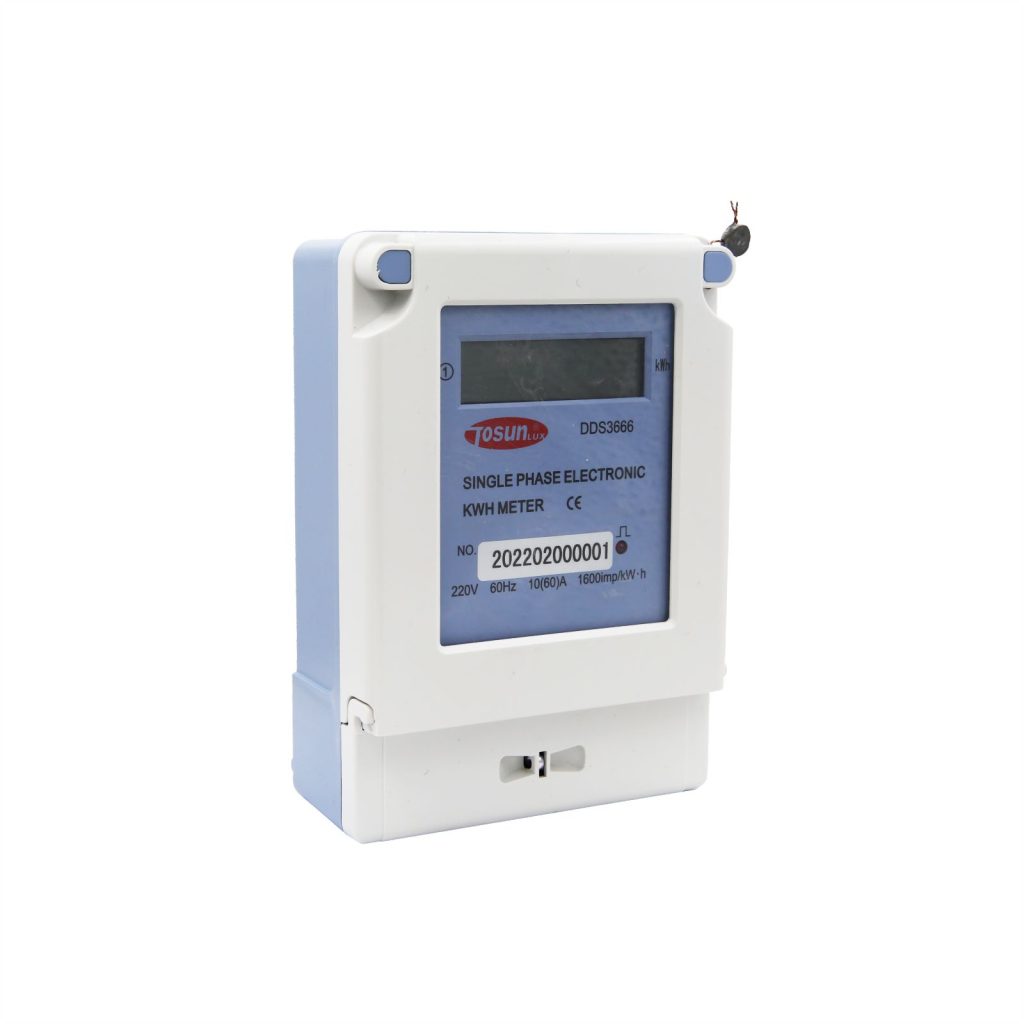What Is an Energy Meter?
Table of Contents
ToggleWhat is an energy meter? An energy meter is a device that measures the amount of electrical energy consumed by a residence, business, or electrically-powered device. It’s an essential part of the electrical power grid, providing utility companies and consumers with valuable data on energy usage.
Energy Meter Types
What are the types of energy meters? Some of the types of energy meters in use today are electromechanical meters, electronic meters, smart meters, and net meters.
Electromechanical Meters
Electromagnetic meters are traditional analog meters with a rotating aluminum disc to measure power usage. The speed of rotation is proportional to the amount of power being
Electronic Meters
Modern digital energy meters have replaced electromechanical meters in many areas. They use electronic circuitry to measure voltage and current, calculating energy usage with high precision. The digital display shows real-time and cumulative energy consumption. This is what an electronic meter is.
Smart Meters
Advanced metering infrastructure (AMI) or “smart meters” are the latest type of energy meter. Their built-in communication capabilities allow them to transmit real-time usage data to the utility company. Smart meters can also receive information, enabling features like time-of-use pricing and remote disconnection.
Net Meters
Used with renewable energy systems like solar panels or wind turbines, net meters measure the bi-directional flow of electricity. They record both the energy consumed from the grid and the excess energy generated by the renewable system that is fed back into the grid.
Construction of Energy Meters
Energy meters consist of several key components:
Voltage and Current Sensors
Energy meter types use voltage and current transformers or sensors to measure the incoming electrical supply. These safely step down the high voltage and current to levels that the meter’s circuitry can handle.
Circuitry
The meter’s electronic components, such as the analog-to-digital converter, microprocessor, and display driver, are mounted on a printed circuit board (PCB). The circuitry calculates energy usage based on the measured voltage and current.
Display
Analog energy meter types have dials or pointers that indicate consumption, while digital meters feature LCD or LED screens showing usage data.
Communication Module (Smart Meters)
Smart meters incorporate a communication module, typically using wireless technologies like cellular, Wi-Fi, or ZigBee. This allows the meter to transmit data and receive commands.
Benefits and Functions of Energy Meters
Energy meters provide numerous benefits and serve essential functions in the modern electrical grid. Some of the key benefits and functions include:
Billing
Meters accurately record energy usage, enabling utility companies to bill customers fairly based on their consumption.
Energy Management
By providing detailed usage data, meters help consumers understand their energy consumption patterns. This information can be used to identify ways to reduce usage and costs.
Load Monitoring
Utilities use meter data to monitor the overall load on the electrical grid. This helps them manage supply and demand, ensuring a stable and reliable power supply.
Renewable Energy Integration
Net metering allows consumers with renewable energy systems to offset their consumption with the energy they generate, reducing their bills and environmental impact.
How Does Energy Meters Work?
To understand how energy meters work, it’s essential to know that they measure electrical energy using the formula: Energy (kWh) = Power (W) × Time (hours). Here’s a step-by-step explanation of how modern electronic meters work:
- Voltage and current transformers or sensors continuously measure the incoming voltage and current.
- The meter’s circuitry samples these measurements thousands of times per second, converting the analog signals to digital values.
- The microprocessor calculates the instantaneous power (in watts) by multiplying the measured voltage and current.
- The meter tracks the duration of time (in hours) that power is consumed at each level.
- By multiplying power by time and summing the results, the meter determines the total energy used, in kilowatt-hours (kWh).
- For smart meters, the meter transmits the usage data to the utility at regular intervals using its communication module.
Conclusion
In summary, an energy meter is a vital device that measures electrical energy usage in homes, businesses, and other applications. Available in various energy meter types such as electromechanical, electronic, smart, and net meters, they consist of voltage and current sensors, processing circuitry, displays, and communication modules.
Energy meters continuously measure voltage and current, calculate power, and track usage over time to determine the total energy consumed in kilowatt-hours, making them an essential part of the modern electrical grid.
Choosing the Right Energy Meter for Your Needs
With a better understanding of what an energy meter is, how it works, and the various energy meter types available today, you can easily choose the right meter for your specific application.
If you’re in the market for energy meters, look no further than TOSUNlux.
TOSUNlux offers a wide range of high-quality energy meters suitable for residential, commercial, and industrial use. Browse our selection today and find the perfect energy meter to meet your needs.
Don’t hesitate to contact our support team for expert advice and guidance in choosing the ideal energy meter solution for your project. We are always here to help!
Tel: +86-577-88671000
E-mail: ceo@tosun.com
Skype: tosunelectric
Wechat: +86-139 6881 9286
WhatsApp: +86-139 0587 7291
Address: Room No.1001 Wenzhou Fortune Center,Station Road, Wenzhou, China
REQUEST A QUOTE
WhatsApp us
 : +86-139 0587 7291
: +86-139 0587 7291 English
English Español
Español Русский
Русский Français
Français العربية
العربية Português do Brasil
Português do Brasil Українська
Українська Türkçe
Türkçe Polski
Polski Nederlands
Nederlands Italiano
Italiano Bahasa Indonesia
Bahasa Indonesia हिन्दी
हिन्दी اردو
اردو አማርኛ
አማርኛ Հայերեն
Հայերեն ไทย
ไทย Монгол
Монгол فارسی
فارسی Shqip
Shqip Ελληνικά
Ελληνικά



